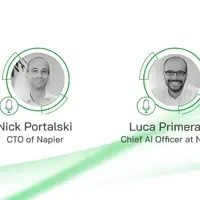
Using Tech to Fix the Money Laundering Problem – Napier
One of the biggest problems when managing data is that vast quantities of it is scattered across data silos and multiple systems. The primary issue this causes is the inability to shape your business to your customers' demands. What's often forgotten about is that when that data also has transactional information, it becomes hard to monitor suspicious activities from within your business. This is where money laundering becomes a fear.
Regularly, industries rely on legacy systems, however this has proved ineffective as over $2 trillion is laundered every year. Financial sectors spend over $180 billion on anti-money laundering capabilities to catch less than 1% of the financial criminals responsible. 66% of this is spent on staff and with the volume of transactions increasing exponentially, it’s easy to understand that simply scaling teams to manually trawl through this data is unsustainable. Increasingly, financial organisations are looking to new technologies to provide assistance.
The key is to invest in the right kind of anti money laundering (or AML) software, but how do you know where to start? In this podcast, Chief AI Officer at Napier Luca Primerano and CTO of Napier Nick Portalski talk about the problems with modern approaches to AML, the potential of AI as a solution to problems in the compliance space and what the future of AML looks like.









